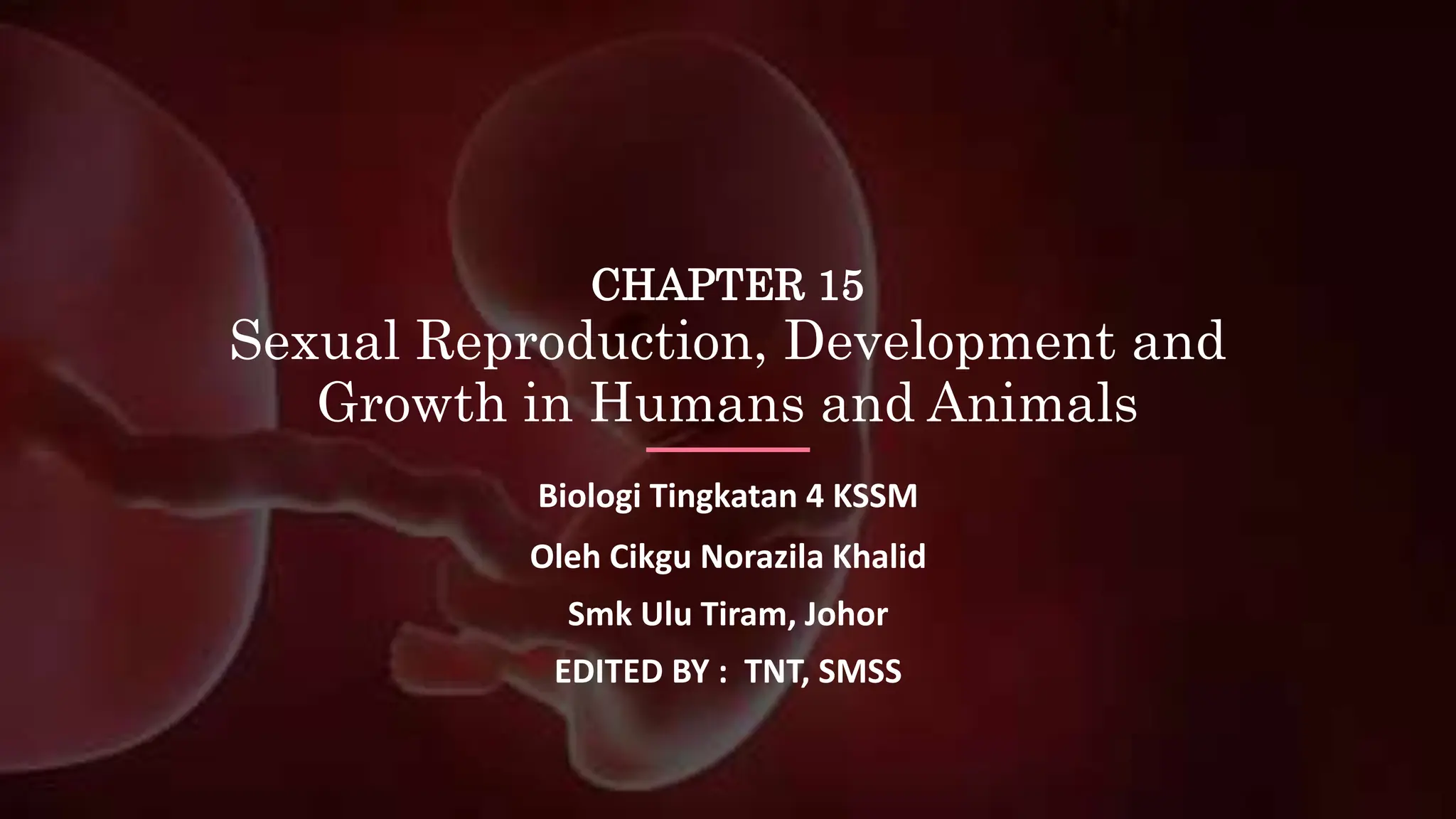The document outlines the reproductive system and processes in humans and animals, including gametogenesis, the menstrual cycle, pregnancy, and embryo development. It describes the hormonal regulation involved in these processes, as well as health issues related to reproduction, such as impotency and miscarriages. Additionally, it covers growth processes in humans and animals, highlighting differences in growth patterns, especially in insects.


































































































